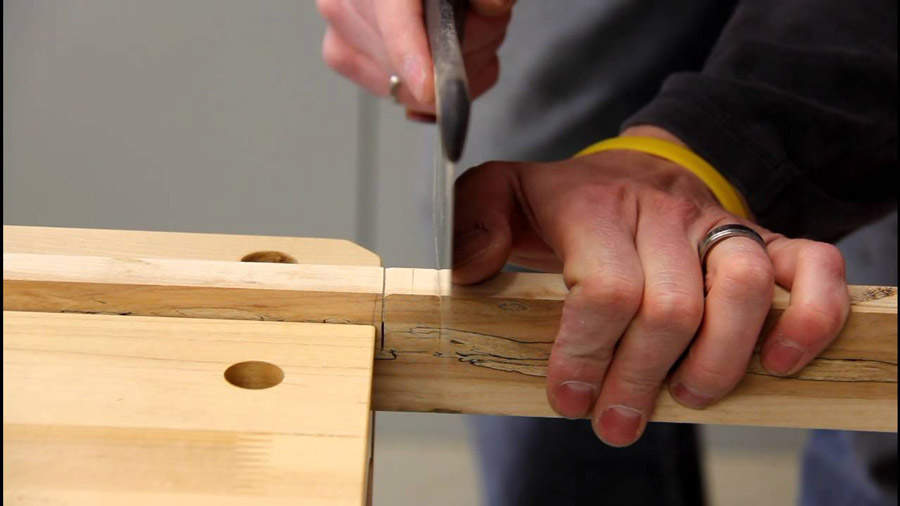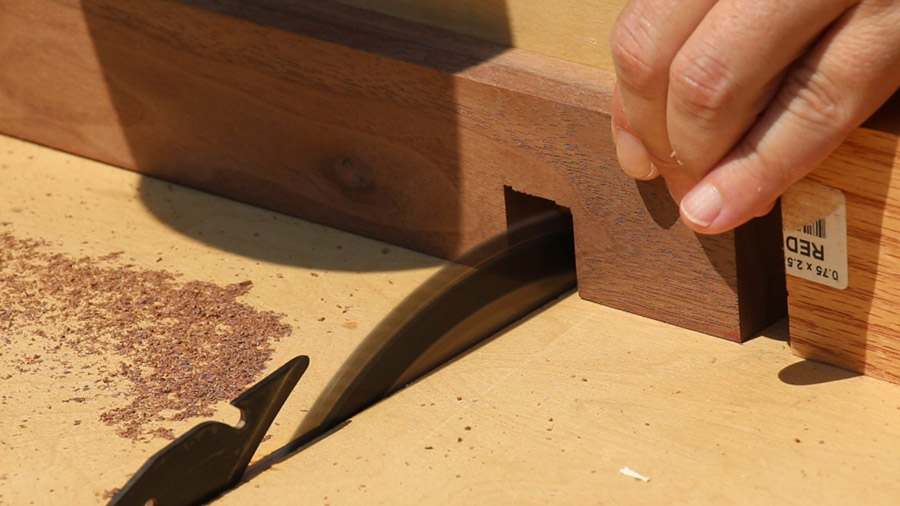
Cutting notches is one of the fundamentals in woodworking. Notch is an important element that determines the firmness of the log cabin; it also serves as an indispensable joint for chairs, tables, and other wood furniture projects.
Basically, woodworking notch cutting is performed by repeatedly cutting within a groove area. This cutting creates a series of thin wafers that can be easily knocked out or scrapped later. Cutting notches in wood can be performed with any saw. And framing notches can be done by hand using a drill and chisel.
This article will elaborate more clearly on how to cut notches in wood so that you can produce a good-looking wood furniture project.
What You Need
For measuring the notch
- Tri-square
- Pencil
- Ruler
For cutting the notch
- Circular saw
Alternatives for circular saw
- Chop or miter saw
- Table saw & miter gauge
- Power drill
- Reciprocating saw
For defining the notch
- Hammer
- Chisel
For body protecting
- Safety glasses
- Dust mask
Even though the method of cutting notches has been told for decades, its presence has never been diminished. Now there are thousands of modern power tool available to perform a cutting-edge saw line, but when it comes to cutting a notch, some good old handheld tools like a hammer and a chisel are always required.

How to Cut Notches in Wood
Check out where you are about to cut the notch in the wood. Have a look at the quality of the wood and its estimated dimensions. This is to ensure you can successfully have notch inside it.
Use a tri-square to sketch the shape of the notch on both the face and the side of the wood. You may also need a pencil and a ruler to figure out exactly the width, the length and the depth of your notch. After you are done with measuring the notch, get ready by wearing your safety gears.
To be far more accurate dimensioning while using the saw to cut a notch, you are advised to cut the lines with a cutter knife. It will facilitate rendering the damage the cut line caused irrelevant by limiting to lines that will be cut.
Also, you need to pay more attention when cutting along the grain as it’s very likely to get pulled along the grain. The first passes should be light and then gradually increasing in pressure.
Start with setting your saw blade to the desired depth. Make sure your slices are perpendicular to the grain. You can cut a series of parallel lines 2 or 3 millimeters apart. Using a circular saw is especially useful for most of the notches as this method allows you to slice straight across the board and making beautiful cutting lines parallel to the grain.
Also, a router is ideal for shallow notches – in the half-inch range. After setting the desired depth of your notch, you can then easily plunge down into the wood and quickly remove a uniform depth. However, if you do not have a template set up, you will need to stop shy of the outer edge and finish it by hand using a hammer and chisel.
Other Alternatives for Circular Saw
Chop or Miter saw
Hold your workpiece against the fence with one hand and turn on the saw with your other hand. Lower the blade inside the drawing of the notch until it reaches the lines indicating the notch’s depth. Move the blade above the surface of the wood and then continue to slide the wood to the right or left 1/8 inch. Continue this step until the notch drawing is cut out. This method is also applied when using a reciprocating saw, though it could consume more of your effort and patience.
Table saw
To prepare for the cutting, begin by raising the saw blade on the table saw to the measurement. Next, set the miter gauge at 90 degrees and put it on the table saw in the miter gauge slot. Place the workpiece on the table saw with the notch drawing facing down. It is recommended that the wood is flush against the miter gauge. Then, align the blade with the inside of the line drawing on the right or left.
To start the cut, turn on the saw and hold the wood tight against the miter gauge. The, push the wood and the miter gauge together over the blade and back again, turn it back to its original place behind the blade. Repeat the process by sliding the wood to the right or left 1/8 inch until you finish the other end of the notch drawing.
Power drill
Basically, you can use a power drill to get a notch in the same way of using a handheld saw. However, please note that using a drill is only feasible when you need to have deep notches. Otherwise, switch to use a circular saw or more preferably, a router to have more control over your notch.

Even though you can have several options of tool to cut the notches, all of them need a hammer and a chisel to finish the job. You may want to set things up so that the tool can do the whole thing, but if you want to have notches of the exact dimension repeatedly, you may need to think of rigging up a template so your router can rip through the entire notch.
However, in many cases when it is not feasible to do so, you really need to use a hammer and a chisel. Using a hammer together with a chisel will help you to have cutting-edge boundaries of the notch, making it look clean and straight.
Pick up ones according to the size of the notch and work on a table that can take a right amount of pressure stemming from the colliding of the tools and the wood. This is to ensure that you can define the notch without too much jump and possible injuries.
After all, you don’t need any expensive tool to cut a notch in the wood. Instead, more importantly, use tools that are in good maintenance and familiar with you so that every cut you make will get you flat and fit notches. Above are all of what you need to know about how to cut notches in wood. Hope you find it helpful.


